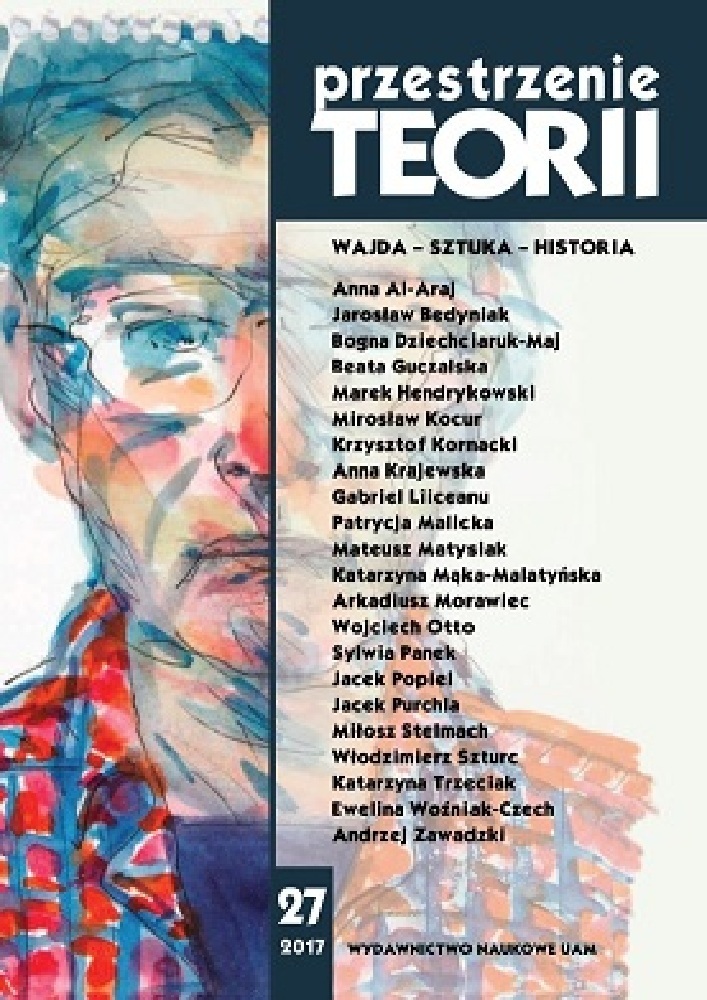Abstrakt
In this paper, the author presents the final period of the French Revolution as interpretated by Andrzej Wajda. The screenplay was prepared by Jean-Claude Carrière based on Stanisława Przybyszewska’s drama (also used by Wajda as a screenplay in many dramas). It helped the director to describe the reality of the intense time of Robespierre’s terror and Jacobin efforts to guillotine Danton and his allies. Wajda reveals the same mechanisms of crime, manipulation and lies which became the backdrop for political events in Poland between 1981-1983 (especially with the introduction of martial law in Poland in 1981). The model of Danton’s fall and the strengthening of totalitarian rule are considered the current model of history, which is based on cruelty and the struggle for power. The film forms the basis for a broader view of history as the tragic entanglement of events, which is the result of hubris and the desire for material goods, and is the origin of totalitarian rule. References to the emblems of the revolution, allegories, and the symbolism of art (paintings of David) are the fundamental ekphrasis of meanings set by the film. Wajda’s analysis of Danton shows some typical ways of understanding and interpreting the signs of culture and history.
Bibliografia
Baszkiewicz J., Danton, Warszawa 1980.
Katafiasz O., Shakespeare i kino. Strategie adaptacyjne i ich konteksty społeczno-kulturowe, Kraków 2012.
Lefebre G., Etudes sur la Révolution française, Paris 1963.
Lubelski T., Historia kina polskiego 1895–2014, Kraków 2015.
Lubelski T., Wajda. Portret mistrza w kilku odsłonach, Wrocław 2006.
Mathiez A., Danton et la paix, Paris 1919.
Walaszek J., Teatr Wajdy. W kręgu arcydzieł: Dostojewski, „Hamlet”,„Wesele”, Kraków 2003.
Licencja
Autorzy
Autorzy tekstów przyjętych do publikacji w czasopiśmie „Przestrzeniach Teorii” są zobowiązani do wypełnienia, podpisania i odesłania na adres redakcji umowy o udzielenie nieodpłatnej licencji do utworów, z zobowiązaniem do udzielania sublicencji CC.
Zgodnie z umową, autorzy tekstów opublikowanych w czasopiśmie „Przestrzeniach Teorii” udzielają Uniwersytetowi im. Adama Mickiewicza w Poznaniu niewyłącznej i nieodpłatnej licencji oraz zezwalą na użycie sublicencji Creative Commons Attribution-NonCommercial-NoDerivatives 4.0 International (CC BY-NC-ND 4.0).
Autorzy zachowują prawa do dalszego, swobodnego rozporządzania utworem.
Autorzy, którzy wykorzystują w swoim tekście cudze utwory (np. ilustracje, fotografie) proszeni są o dostarczenie do redakcji czasopisma zgodę na publikację od uprawnionych podmiotów.
Użytkownicy
Zainteresowani użytkownicy internetu uprawnieni są do korzystania z utworów opublikowanych po 2015 roku „Przestrzeniach Teorii” tylko w calach niekomercyjnych, pod następującymi warunkami:
- uznanie autorstwa - obowiązek podania wraz z rozpowszechnionym utworem, informacji, o autorstwie, tytule, źródle (odnośniki do oryginalnego utworu, DOI) oraz samej licencji;
- bez tworzenia utworów zależnych - utwór musi być zachowany w oryginalnej postaci, nie można bez zgody twórcy rozpowszechniać np. tłumaczeń, opracowań.
Do wszystkich tekstów opublikowanych przed 2015 r. prawa autorskie są zastrzeżone.
Inne
Uniwersytet im. Adama Mickiewicza w Poznaniu zachowuje prawo do czasopisma jako całości (układ, forma graficzna, tytuł, projekt okładki, logo itp.).
